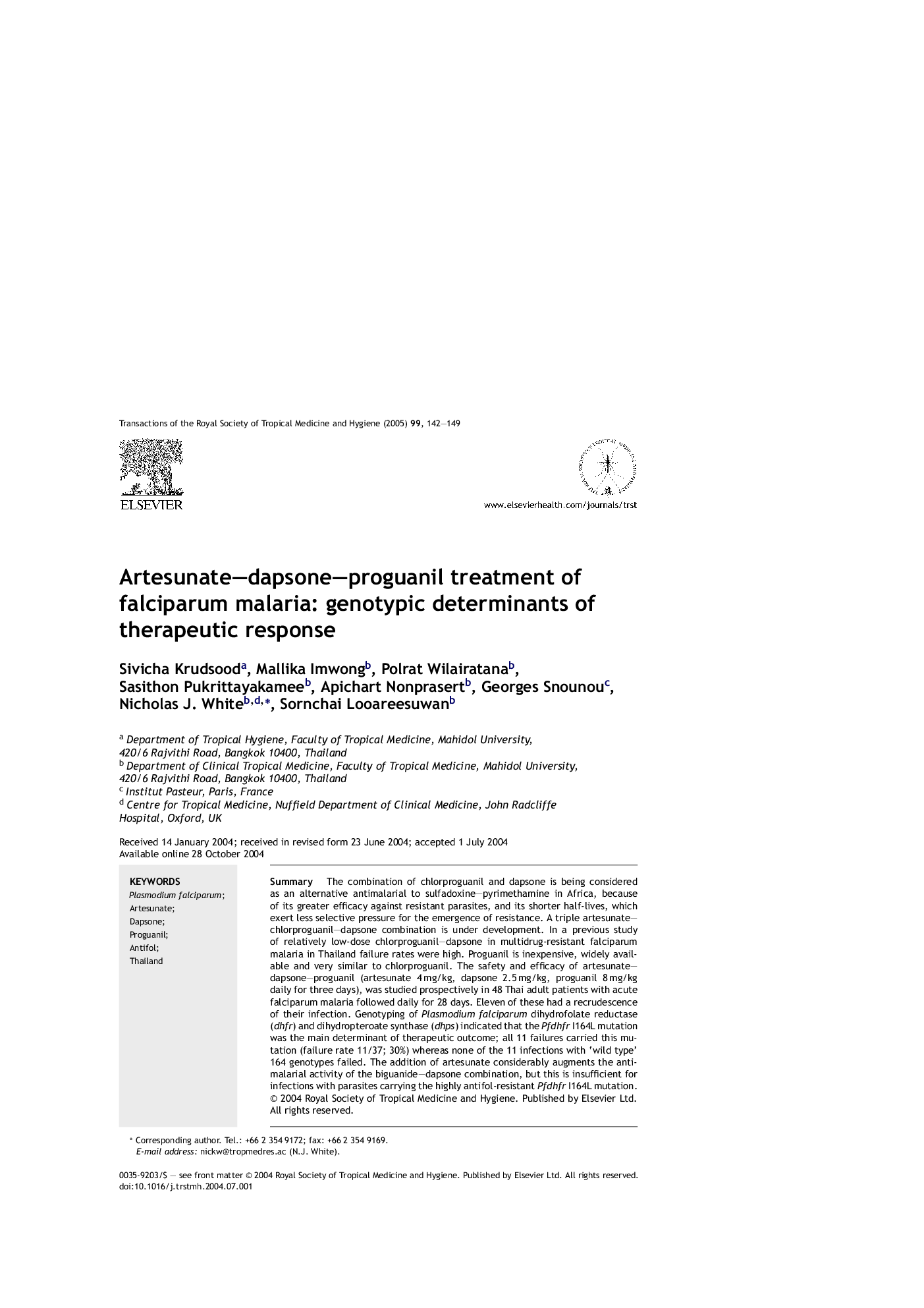| Article ID | Journal | Published Year | Pages | File Type |
|---|---|---|---|---|
| 10030654 | Transactions of the Royal Society of Tropical Medicine and Hygiene | 2005 | 8 Pages |
Abstract
The combination of chlorproguanil and dapsone is being considered as an alternative antimalarial to sulfadoxine-pyrimethamine in Africa, because of its greater efficacy against resistant parasites, and its shorter half-lives, which exert less selective pressure for the emergence of resistance. A triple artesunate-chlorproguanil-dapsone combination is under development. In a previous study of relatively low-dose chlorproguanil-dapsone in multidrug-resistant falciparum malaria in Thailand failure rates were high. Proguanil is inexpensive, widely available and very similar to chlorproguanil. The safety and efficacy of artesunate-dapsone-proguanil (artesunate 4Â mg/kg, dapsone 2.5Â mg/kg, proguanil 8Â mg/kg daily for three days), was studied prospectively in 48 Thai adult patients with acute falciparum malaria followed daily for 28 days. Eleven of these had a recrudescence of their infection. Genotyping of Plasmodium falciparum dihydrofolate reductase (dhfr) and dihydropteroate synthase (dhps) indicated that the Pfdhfr I164L mutation was the main determinant of therapeutic outcome; all 11 failures carried this mutation (failure rate 11/37; 30%) whereas none of the 11 infections with 'wild type' 164 genotypes failed. The addition of artesunate considerably augments the antimalarial activity of the biguanide-dapsone combination, but this is insufficient for infections with parasites carrying the highly antifol-resistant Pfdhfr I164L mutation.
Related Topics
Life Sciences
Immunology and Microbiology
Applied Microbiology and Biotechnology
Authors
Sivicha Krudsood, Mallika Imwong, Polrat Wilairatana, Sasithon Pukrittayakamee, Apichart Nonprasert, Georges Snounou, Nicholas J. White, Sornchai Looareesuwan,
